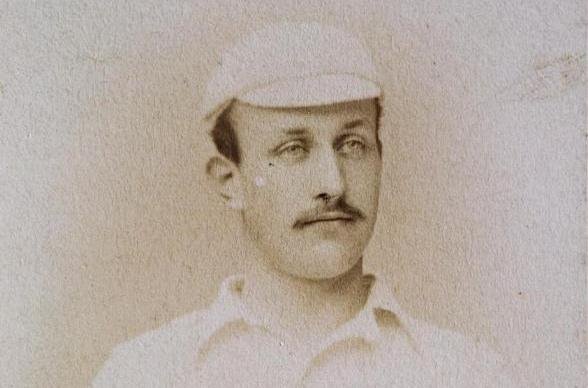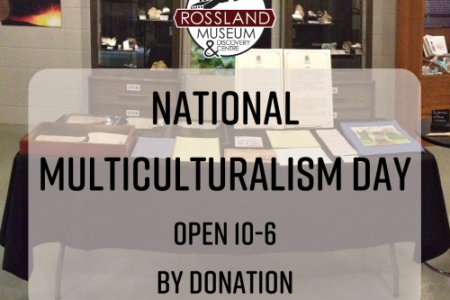TALES AND LEGENDS OF THE MOUNTAIN KINGDOM: Sir Charles Ross, the Rifle Scandal, and Royal Connections
In a small town one would often expect there to be interesting connections between people that make outsiders just shake their heads. You know, “my great great grandmother’s cousin’s brother-in-law’s little sister was actually one of Queen Victoria’s maids,” or something like that. You nod and smile and go, ‘oh, how cool’. The cliche “it’s a small world” exists for a reason: out in the broader world, we find little connections between seemingly unconnected things, events, and people all the time. And if you’re familiar with the six degrees of separation (or have at least seen the movie), and you believe in that concept to whatever degree you want to, you might like the series of connections I’m going to make for you in this story.
How is Rossland connected to Dodi Al-Fayed? You know, the son of Harrods owner Mohamed Al-Fayed, who was killed in the same car crash that took the life of the late Princess of Wales? And how might these people be connected to one of the biggest political scandals in Canadian military history? Well let me tell you.
It started out with Rossland’s gold mining boom in the late 1890s. By 1897, BC mining speculation was making a big splash on the London Stock Exchange and there were over 40 BC mining companies who had their own market within the Exchange. There was a lot of excited press back in Jolly Old England about our little corner of the world. In fact, someone once referred to Rossland as New Johannesburg–the original Johannesburg in South Africa having been the site of an enormous gold rush in the 1880s.
Interestingly enough, our connecting thread between the people and events I previously mentioned includes another South African tie-in. Sir Charles Ross, the name of that connecting thread, did a stint in South Africa during the second Boer War, which took place between October 1899 and May 1902. Born to the 8th Baronet of Balnagown, a wealthy Scottish landowner, Sir Charles inherited the baronetcy when he was 11 years old and then went on to be quite the spoiled brat.
While attending the creme de la creme schools that male aristocrats typically attended (and still do) back then, like Eton and Cambridge, his mother spent ludicrous sums of money on luxuries for him, like “a magnificent ocean-going steam yacht, a large sailing yacht, the most superbly appointed and biggest steam launch for river use on the Thames, and a coach and four.” Well, perhaps he was not such a spoiled brat after all: he sued his mother once he reached his majority for spending all his money on such things. Ross was also a noted rower, sharpshooter, and game hunter.
Ross went on to become a famous inventor of firearms, and in fact, it was at Eton College that he invented his first rifle. Thereafter, he invented more rifles that were quite well-regarded by hunters, and when Sir Charles went off to fight in the Boer War as a lieutenant with the 3rd Battalion of Seaforth Highlanders, the British army utilized the Ross Machine Gun Battery which had on it rifles invented by Sir Charles.
The Boer War had an impact on Canada’s military. During that time, it became difficult for Canada to obtain arms for its own army because it normally got its weapons from Britain. The powers that be decided it was time for Canada to start making its own rifles, and this is where Sir Charles Ross becomes important. It was his Ross Rifle that was picked by the Canadian government to be manufactured in Canada and used by the Canadian military. The Ross Rifle had a great reputation amongst sport hunters and target shooters, and in 1910 Ross set up a factory in Quebec that would make his rifles. The rifle would go on to be used by Canadian soldiers in the First World War–but with tragic results.
Although the Ross Rifle worked well in controlled environments, it was a disaster in the trenches of Europe, where it was hard to fire due to the long length of its barrel and where it frequently jammed up in muddy conditions. The bayonet on the rifle also had a habit of falling off during firing. During the battle of Ypres, under a gas attack, Canadian soldiers became so frustrated by the malfunctioning Ross Rifle that they threw them down and instead picked up the Lee-Enfield rifles their fallen British comrades used. This happened again in the battle of the Somme in 1916, and finally the military bigwigs stepped in and the Canadian government ordered that the Ross Rifle be replaced by the Lee-Enfield.
But before all this happened, Sir Charles Ross was a big name in–guess where–Rossland. Being a wealthy guy, he was one of the first investors in Rossland’s mining scene and was the Centre Star Mining Company’s director for a while. Additionally, he was a mover and shaker behind the creation of the West Kootenay Power and Light Company, and one of his legacies from that time was the electrical plant on the Kootenay River at Bonnington Falls, which he built.
In Jeremy Mouat’s Roaring Days, there is a photo of the Dominion Day garden party held at the Baine residence in Rossland in 1896 containing Sir Charles Ross, so he was around in Rossland’s very early days. Mouat says in the photo’s caption that “Ross spent several years in the district.” At the time, he would have been married to Winifred, his first of three wives, whom he married at the age of 21 without his mother’s permission. Perhaps he brought her along to the sticks, too. Perhaps, as the director of the Centre Star Mining Company, he knew or was even the boss of the father of that other famous Ross from Rossland, Phyllis Gregory Ross, whose dad was a mining hoist operator (I cannot verify what company he worked for).
The Ross Rifle Scandal ruined lives and careers, and forever put a bit of a black mark on the reputation of Sir Charles Ross, even though it was his friend Sam Hughes who was the force behind keeping the Ross Rifle in the hands of Canadian soldiers when it obviously wasn’t appropriate for the situation. Sir Charles made heaps of money from the deal, though, and died a very wealthy man in St. Petersburg, Florida, in 1942.
Sir Charles’ eponymous rifle remains much maligned by military historians. It’s a shame he didn’t name the Bonnington Falls electric plant after himself, or the power company. At least then he’d have had something more positive associated with his name!
So, now, how is Sir Charles Ross related to the Al-Fayeds?
He was one of Britain’s largest landowners. The Balnagown estate was huge, encompassing around 366,000 acres and 3000 tenants. After Sir Charles’s death in 1942, his estate went to his third wife, Dorothy Mercado, who also happened to be his secretary. Dorothy remarried and she and her second husband tried to maintain the estate, unsuccessfully attempting to run it as a “sporting venture” until the 1960s, when they had to start gradually selling it off. The castle fell into ruin.
The man who eventually bought the castle – and restored it – was Mohamed Al-Fayed, father of Dodi. He purchased it in 1972, and owns it to this day.
Small world, eh?
Sources:
1. Wikipedia
2. http://www.mysteriesofcanada.com/Military/ross_rifle_scandal.htm
3. http://www.firstworldwar.com
4. http://www.tainmuseum.org.uk
5. http://www.com-info.nl/wapens.html
6. photo credit: http://www.tainmuseum.org.uk/imagelibrary/picture/number174.asp


























